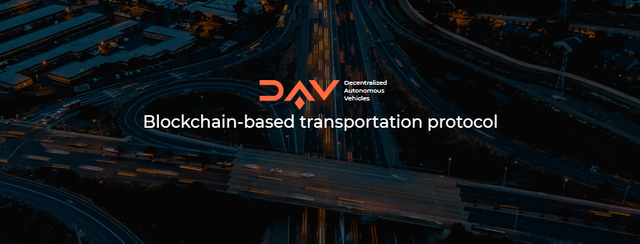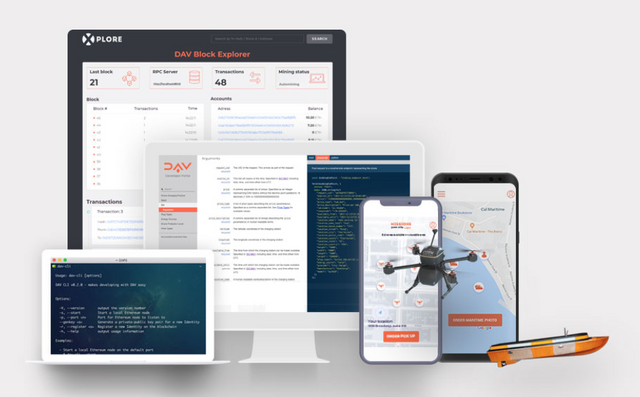
The technology of blocking was most often manifested in such solutions and projects that are connected with finance and cryptotrading. But that project, which we will talk about this time, will become something completely new, transferring us to the future, in which robots and machines will replace people. If before that time they were applied to a large extent in production, then in the near future they will enter the sphere of transport.
The project, which we will talk about today, is called DAV , and it will be connected with unmanned vehicles. In this part of the review we will talk about his idea and how such vehicles are used now, and in subsequent articles we will tell you about the ways of applying the technology that the DAV creators suggested.

What is DAV?
DAV is a block project that started early last year and is currently preparing to publicly sell its tokens, which is scheduled to begin on June 11th. The very name DAV stands for Decentralized Autonomous Vehicles - Decentralized autonomous vehicles.
The idea of the project is to create a decentralized network that will unite users and unmanned devices such as drones, cars, trucks, boats and robots to provide people with various transport services in a completely decentralized manner.

The team of the DAV advisors included specialists from such world famous companies as SAP, General Motors, Ford, NASA, Space Shuttle, IBM, ups, Ethereum and Google, each of which will contribute to the success of DAV. The fruitful joint work of the team was able to achieve such expert assessments of ICO, which exceed 90%.
The technology of blocking will become the basis for DAV, allowing reliable and invariable storage of data on the history of service providers and vehicles themselves, and also will unite them in one ecosystem together with end users. But the most important introduction will be DAV tokens.
The economy of tokens is built in such a way that customers can pay for the services of unmanned vehicle owners to transport people and deliver goods using DAV, while receiving tokens for charging vehicles.
Unmanned vehicles now
As it turned out, unmanned vehicles - this is not a fiction from films about the future. Companies and developers around the world are accumulating their forces to create solutions that would simplify and improve the service. Let's look at some of them.
Companies such as Starship Technologies in Estonia and Dispatch in California have launched their own drones on wheels, with which they organize the delivery of small goods that can be transported along footpaths.
The French company Unsupervised.ai has developed a robot that moves on four legs like a dog. They use it to deliver on short distances - up to 50 meters. Such a device can be very useful in the office.
Already in Iceland, the online store Aha uses an unmanned drones called Flytrex, which delivers customers purchased in the marketplace products home in the air. This method of delivery will allow to completely or at least partially get rid of the couriers, whose work will be greatly facilitated and will be, most likely, precisely in servicing such drones.
But these are small-sized drones, which are mainly intended for delivery of various goods with low weight. But what about companies like Airbus, Uber and Kitty Hawk that are going to launch compact unmanned vehicles to transport people. They will look like ordinary drones, only the dimensions and power will be much larger.
In 20 US cities, the Waymo unmanned vehicle has already been tested, which will comfortably carry passengers, and Uber uses such vehicles as a taxi in the UAE.
As you can see, progress does not stand still, and autonomous (unmanned) transport will eventually be used throughout the world no less actively than the traditional one. Such a vehicle will give people more comfort, security and space, so unmanned cars and drones will be something truly useful.

MEMENTO12
ETH : 0x5EceFFB2D5257f31C38A14Ce4f0D534Ac9EEEe6B